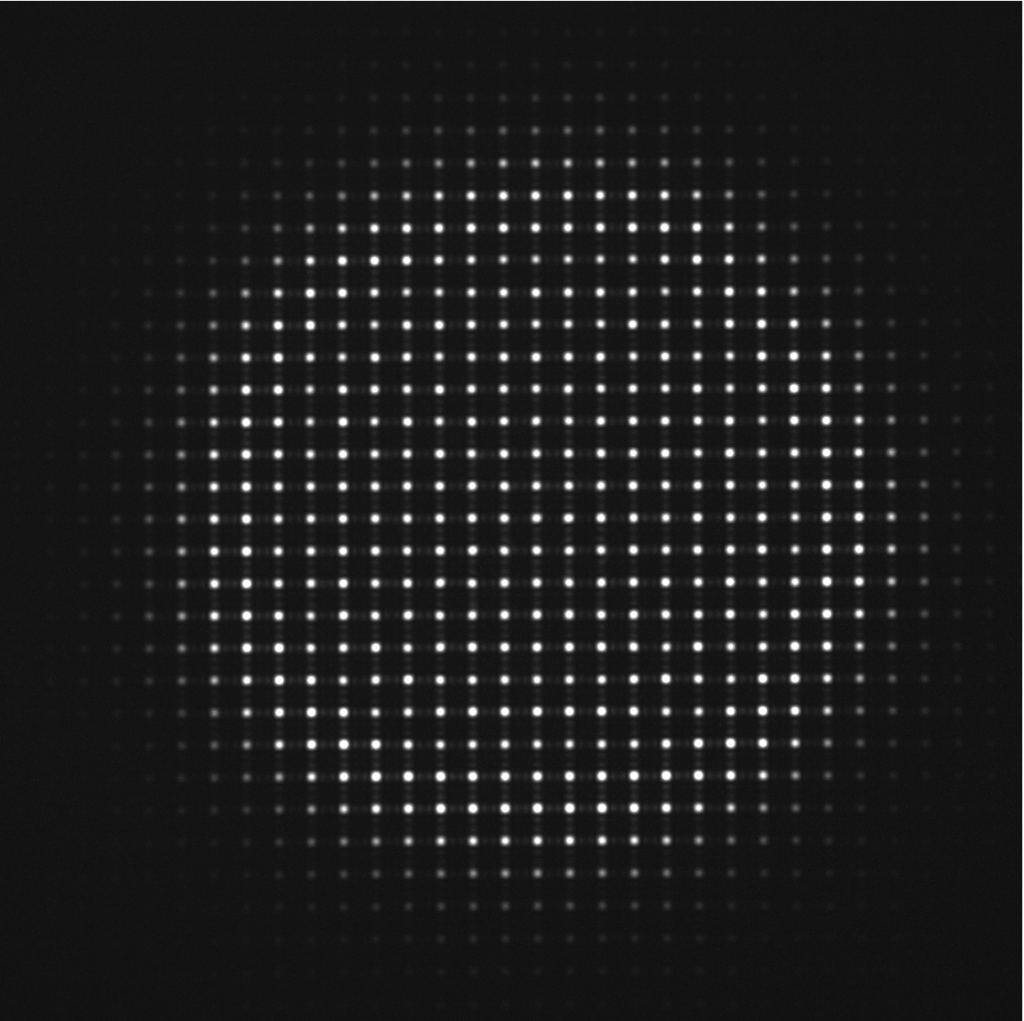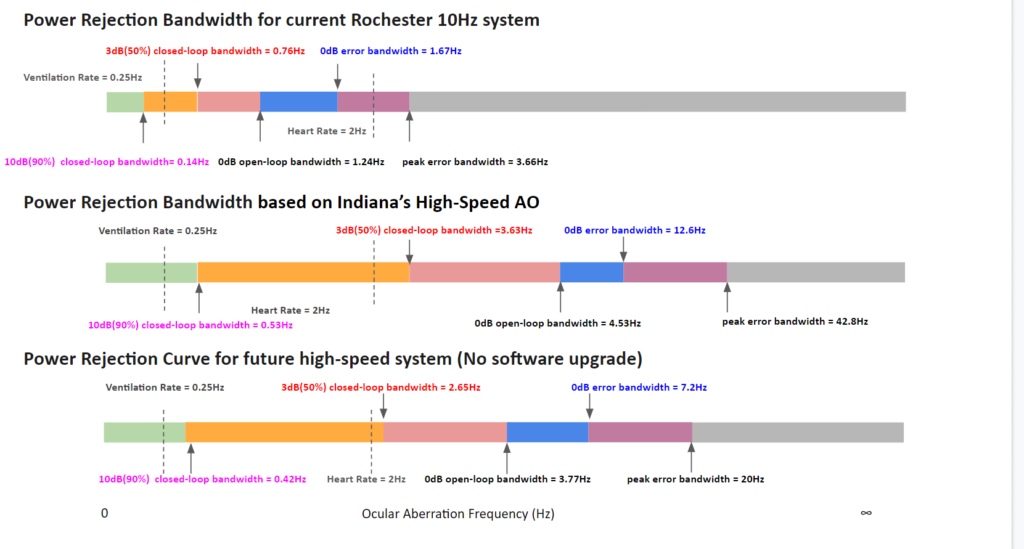Author
Zhengyang Xu
Mentor
Juliette E. McGregor & David R. Williams
Abstract
For the current design of adaptive optics scanning laser ophthalmoscopy (AOSLO), the functional imaging of primate foveal cells is limited by the isoplanatic patch size of primate fovea, providing an imaging field of view much smaller than clinician ophthalmoscopy.[1] Meanwhile, a larger field of view than correction patch size is required in primate foveal physiology experiments to stimulate and read functions of retinal ganglion cells (RGCs) due to the peculiar structure of photoreceptor displacement in primate retina. Limited correction patch size is exacerbated by the motion harmonic and shifting focal plane from subject ventilation and pulsation movement. The cross-correlation registration tracking algorithm also performs poorly from focal plane shifts induced distortion. Without accurate movement registration and in-time aberration correction, fine frequency analysis at specific bandwidth is forbidden even in anesthetized and paralyzed primate experiments, increasing the difficulty of designing physiology experiments.
Transferring high-quality AOSLO imaging in human subjects with vision impairment for future vision restoration assessment needs improvement in aberration correction speed.[1] Donald T. Miller’s group at the University of Indiana has developed a high-speed AO-OCT system that corrects aberrations ten times above common eye movement frequency.[2] The high-speed closed-loop correction is promising to resolve all motion-induced aberration changes in primate retinal imaging, thus providing the ability to observe high-frequency function responses such as RGC spontaneous activity. Also a control loop speed significantly faster than the SLO frame rate, localized correction patches could be realized to improve the local wavefront, thus breaking the limitation of the adaptive optics imaging field of view. The high-speed AO system will provide more stable imaging for current in-vivo primate functional imaging, potentially offering a platform for future awake primate physiology studies.
High-Speed Wavefront Sensing
The wavefront correction mechanism in AOSLO is realized through a real-time AO closed-loop.[4] The correction loop consists of a Shack-Hartmann wavefront sensor camera, a deformable mirror, and control software. With micro-lenslet arrays focusing on a sCMOS detector, the Shack-Hartmann wavefront sensor camera (SHWS) characterizes system wavefront gradient from AO spots displacement. The control software (Tsunami wavefront sensor) acquires the most recent wavefront gradient image captured in the WFS, calculates pupil aberration in Zernike orders, then outputs the actuator voltage for the deformable mirror. Lastly, the deformable mirror receives voltage signals and adjusts the micro-actuator array to change the deformable membrane shape and form a theoretical planar wavefront.
Based on the Power-Rejection Curve simulation, the exposure time of the WFS is the limiting factor to improve correction speed. Current WFS uses a blackflyS camera with 70 ms exposure time to capture an AO spot image. To decrease the exposure time by 550 fold to 0.128ms, we purchased a Hamamatsu lightning sCMOS camera with superior quantum efficiency and readout speed. To minimize the focal shift induced spots displacement reported by Akondi and Dubra (2019), we designed a customized WFS stage to translate the lenslet array inside the camera mount. Below is an image showing saturation of AO spots image with only a 0.2 uW, 940 nm wavefront sensing laser without confocal scanning. The laser power used to achieve saturated spots is more than 100 times lower than the current system, and no spot displacement occurs.

Power-Rejection Curve Simulation
The 10dB closed-loop bandwidth of the current Rochester AO system is 0.14 Hz, and the error transfer function bandwidth is 1.68 Hz. Based on simulation results, the current Rochester AOSLO cannot correct ventilation movement at 0.25 Hz over 90%. The error function bandwidth at 1.67 Hz indicates the 10 Hz AO system will intensify the heartmotion-induced aberration at 2Hz movement. The high-speed 300Hz control loop in Indiana is promising to correct ventilation movement artifacts over 90% and heart motion artifacts over 50%. By only changing the WFS camera to Hamamatsu lightning sCMOS camera, we can achieve similar performance with the Indiana high-speed AO system.

